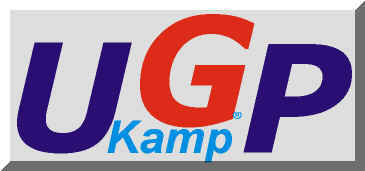DIVERSIFIED PRODUCTION CONTROL AND COSTING
PRODUCTION-UNIT METHOD
UP –
UNIDADE DE ESFORÇO DE PRODUÇÃO

DIVERSIFIED PRODUCTION CONTROL AND COSTING
|
|
| UP - PRODUCTION-UNIT METHOD UP – UNIDADE DE ESFORÇO DE PRODUÇÃO |
 |
The UP represents a unified
measure for all products and production processes.
Your corporation will produce UP's, will program in UP's, will calculate costs in
UP's -
And will know results in UP's and Dollars (or any desired currency).
Life and growth of an enterprise depend on the results it can achieve.
How does a company obtain results? Selling with positive margins – with profit.
| PROFIT defined as : | Selling Price (usually determined by the market) less Cost of the Product (most often distorted or unknown) multiplied by volume of products sold. |
Profit is the "blood" circulating in the veins of
the enterprise.
But to know the profit with certainty, the company has to know COSTS, product by product,
and its CAPACITY to produce them.
How can we measure production of a factory with a great mix of different products?
Pieces, pounds, gallons, inches, etc., cannot represent production, we cannot add
different kinds of products – it would equal to summing up potatoes with apples and
grapefruits – and so on.
Without a unified measuring unit we can only list quantities
of identical products without arriving at a final sum total.
Example:
| 25.000 28.000 38.000 7.000 50.000 25.000 |
locks for suitcases mod. LS15 doorlocks mod. LD25 simple doorlocks mod. LDS20 padlocks mod. LP7 handles mod. H14 handles mod. H06 |
|
| Sum Total: | 173.000 | – pieces of "what"? |
But how would it be if we had a standard measure that would allow us to measure different products - ?
The UP Method creates
a new unit for measuring a diversified production.
With this tool we can study, observe, compare and control the principal elements of
production:
Capacity, costs, contribution margins, productivity, and quantify overcapacities or
bottlenecks.
When you have a common unit for measuring production, this is easily obtained.
Calculations and controls are simplified.
With the UP
Method we can boost
profitability of the enterprise:
Rapidly and clearly we can detect the more profitable products, the loss causing products
and products sold at break-even-point. And we can measure how much we are winning or
loosing, product by product, by product line, and globally.
When we have these numbers we can direct sales and production efforts towards the more
profitable products.
The UP, a new
unit that measures and controls all production stages and processes, is stable and is free
from inflation or deflation.
It is also called production
effort measure because it measures all the efforts of
the factory to transform raw material into finished (or semi finished) products.
This unit is custom tailored to the working conditions of that specific factory and
production processes, able to measure the physical production of hundreds or thousands of
different products with ONE number only, expressed in "UP".
Each product equals a certain quantity of UP's. They vary according to the production
effort absorbed during the procedures in manufacturing.
The sum total of UP's of all products represents the number of total production of the
factory.
Thus we can compare productions of different months and years and different mix, because
the UP as an abstract unit is free
from inflation or deflation.
Georges Perrin, an engineer and entrepreneur, originally
developed the Method in France, calling it "GP". It was brought to Brazil by
Franz Allora (†1996), who studied it and applied together with Ernst Otto Kamp.
Allora & Kamp were co-founders of Tecnosul Systems Engineering (in '82), having
excellent results in more than 80 industries.
Ernst Otto Kamp, with his partner Ronald Ivar Kamp, started Kamp Consult in '94,
proceeding with the marketing & implementation of the UP Method. Ernst Otto Kamp has
the longest experience with the Method in Brazil today.
The UP
Method has been studied, analyzed and
highly valued by the Technological Center of the University of Santa Catarina (UFSC). At
present it is a subject of Master Degrees in Product Engineering and in Business
Administration and Economics (UFRGS - Porto Alegre). Several Theses about the Method and
its principles have been published.
The UP
Method unifies production control of
diversified product mix. It transforms a factory of hundreds or thousands of products or
parts into a factory of only ONE
product: UP's.
This simplifies production control, planning and costing of products (one by one).
It’s a valuable tool especially for the production manager. With it he can compare
different procedures expressed in UP's, Capacity, Margins and Cost-per-UP - not hampered by
monetary expressions subject to inflation or deflation of different years, and / or
currency fluctuations.
It can measure capacity by the hour, by the week and monthly, of single machines, sectors
and of the entire factory.
FACTORY CONTROLS
SELLING PRICES AND BREAK-EVEN POINT